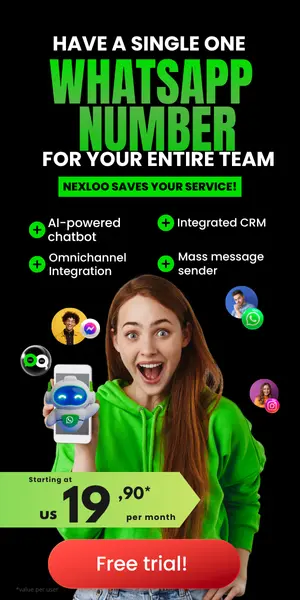In today’s fast-paced digital landscape, businesses are constantly seeking innovative solutions to enhance communication and customer engagement. One such solution is Typebot, an intuitive chatbot tool designed to streamline interactions and automate customer workflows. As the reliance on automation grows, particularly for small to medium-sized businesses, understanding the full potential of Typebot can be a game-changer. This article dives deep into the features and functionalities of Typebot, providing insights that can empower marketing and sales professionals to maximize their use of this remarkable tool.
Typebot is not just about automation; it’s about creating meaningful interactions with customers. Its user-friendly design allows businesses to easily craft personalized conversational flows that align with specific customer journeys. With an array of customizable templates and a versatile drag-and-drop interface, Typebot enables users—regardless of technical expertise—to create engaging chatbots that cater to their unique needs. As we explore Typebot’s capabilities, you will discover how this tool can liberate your team from mundane tasks, allowing them to focus on more strategic initiatives that drive growth.
This comprehensive overview of Typebot aims to provide actionable insights for anyone looking to harness the potential of chatbot technology. Whether you’re a business owner, a marketer, or a sales professional, understanding how to leverage Typebot can enhance your customer engagement strategy. From designing customized chatbots to integrating with existing systems, this article will equip you with the knowledge needed to elevate your business communications. So, let’s delve into the key features of Typebot and learn how this innovative tool can significantly impact your operations.
Understanding the Key Features of Typebot
Typebot offers a range of powerful features designed to enhance business communications and improve customer interactions. At the heart of its functionality is a user-friendly interface that allows users to create chatbots without any prior coding experience. The drag-and-drop capability simplifies the process of designing customized bots tailored to specific business needs. This flexibility is a game changer for companies looking to automate FAQs, capture leads, and collect feedback without the need for extensive programming knowledge.
Additionally, Typebot provides a rich library of customizable templates, covering a variety of industries and business scenarios. These templates not only save time but also enable businesses to launch chatbots quickly, ensuring they can assist customers effectively while reducing response times. By leveraging these resources, organizations can enhance their service delivery and improve customer satisfaction significantly.
Another standout feature is the robust analytics dashboard that Typebot offers. This toolkit provides insights into user interactions, helping businesses understand engagement metrics such as conversation durations, drop-off points, and user satisfaction rates. By regularly analyzing this data, companies can refine their chatbot scripts and strategies, resulting in improved communication outcomes and enhanced customer experiences.
Moreover, Typebot excels in multi-channel support, enabling its deployment across various platforms, including websites, social media, and messaging apps. This omnichannel presence ensures that customers enjoy a cohesive interaction experience, irrespective of the platform they choose. As companies engage with customers through their preferred channels, they uplift brand loyalty and increase the likelihood of repeat business.
Maximizing Your Use of Typebot
To fully harness the potential of Typebot, it is essential to adopt effective strategies and best practices. First and foremost, getting started involves creating an account on the Typebot website. After setting up your profile, familiarize yourself with the dashboard, as it hosts all essential features, including the chatbot builder and analytics tools.
As you venture into building your first bot, the intuitive drag-and-drop interface can be a significant advantage. Begin with a template or design a bot from scratch by adding engaging elements like text responses and media files. Implementing conditional logic is crucial for personalizing interactions based on user preferences, which can greatly improve the overall customer experience. Moreover, testing your bot through the preview feature will help ensure a smooth launch.
Once your bot is operational, leveraging Typebot’s analytics tools is vital for tracking performance metrics. By monitoring engagement rates and user feedback, you can glean insights into the effectiveness of your interactions. Such data-driven decision-making enables continuous improvement of your chatbot’s performance, ensuring it meets your business goals effectively.
Another critical aspect is integrating Typebot with your existing systems, such as CRM and email marketing tools. This integration streamlines workflows and enhances operational efficiency, allowing for seamless data synchronization and communication management. By combining Typebot’s features with your existing tools, you create a comprehensive system that elevates customer engagement and improves overall productivity.
Integrating Typebot with Existing Platforms
Integrating Typebot with your current tools and platforms can lead to significant operational improvements. The first step is identifying the points of connection with systems already in use. Common integrations include CRM software, email marketing tools, and social media platforms, enabling businesses to optimize their workflows and automate repetitive tasks.
A prime example of effective integration is linking Typebot with a customer relationship management system. This connection allows the bot to access customer data directly, facilitating timely responses based on previous interactions. Automating tasks such as updating records and responding to inquiries not only saves time but also ensures that communication remains accurate and personalized.
Additionally, by incorporating Typebot with email marketing tools, businesses can automate lead generation and nurturing processes. For instance, if a customer fills out a contact form, Typebot can initiate a follow-up conversation, gathering valuable information that enhances segmentation and personalization efforts. This level of seamless integration helps maintain consistent communication, which is crucial for nurturing leads down the sales funnel.
Furthermore, integrating Typebot with project management platforms can facilitate task tracking and enhance team collaboration. For example, setting up automated reminders about deadlines or project updates keeps team members informed and engaged, reducing the need for frequent meetings. Training staff on how to leverage Typebot within these integrations will ensure that everyone benefits from the tool’s capabilities, ultimately improving team efficiency and productivity.
Overcoming Challenges with Typebot
While Typebot offers extensive benefits, businesses may encounter several challenges when implementing the tool. One of the most common issues involves the seemingly complex user interface, which can leave new users feeling overwhelmed. To counter this, investing time in Typebot’s tutorials and gradually introducing features can ensure a smoother adaptation for teams.
Another prevalent challenge is ensuring proper integration with existing workflows. Businesses often overlook the necessary steps for seamless adoption, resulting in disrupted processes. Creating a detailed integration plan that outlines potential hurdles can help mitigate these complications and enhance data migration to ensure continuity of service.
Furthermore, users may experience low engagement rates if they do not optimize their chatbot scripts effectively. Striking a balance between automation and human touch is crucial. Regularly reviewing and refining interaction scripts based on user feedback can significantly improve customer experiences, as personalized interactions foster engagement and satisfaction.
Finally, troubleshooting technical issues may be time-consuming for some users. Staying current with Typebot’s help documentation and utilizing community forums can facilitate quick resolutions. Developing a culture of ongoing learning and adaptation will empower organizations not just to tackle the challenges of using Typebot but also to unlock its full potential for enhanced communication and improved sales outcomes.
The Future of Typebot in Business
The future of Typebot looks promising, particularly as it continues to evolve and adapt to the dynamic needs of businesses. Small and medium enterprises (SMBs) can expect numerous innovations that enhance their marketing and sales strategies. By leveraging AI-driven solutions, Typebot will not only streamline routine operations but also personalize customer interactions, ultimately enhancing conversion rates.
As Typebot becomes central to business communication workflows, its significance will only grow. Marketing and sales professionals are beginning to embrace its capabilities, crafting unique user experiences that resonate with their audiences. Implementing Typebot effectively enables businesses to analyze client behavior and make data-driven decisions that foster customer loyalty.
Moreover, the availability of comprehensive tutorials and resources will assist users in maximizing their use of Typebot. From setting up sophisticated bots to refining conversational flows, these supporting materials will further elevate user competency and ensure that SMBs capitalize on the full suite of features available within the tool.
To stay competitive in an evolving marketplace, businesses must adopt a proactive approach to explore Typebot’s capabilities. By embracing advanced technological solutions like Typebot now, organizations will solidify their position in the future, enabling long-term success in enhancing communication and response efficiency.









